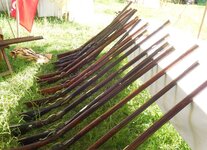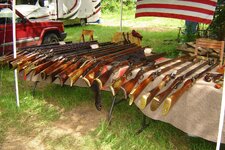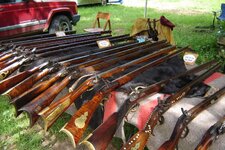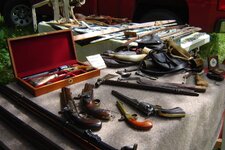- Messages
- 13
- Reactions
- 42
Saw this in my trapping forum, thought it interesting, no matter if truth, fiction or the stretching of a....tail?!?!
"I once heard, that in the old days "Long Guns" were traded for Beaver Pelts by stacking them up until they reached the top of the barrel.
By making the Gun Barrels longer than before, it would take more pelts being stacked up to reach the top of the Barrel. (sounds like they might be related to some of our modern day Traders).
From its beginning in 1670, the Hudson's Bay Company traded long guns on a large scale. By 1742, beaver pelts were valued at: one pelt for one pound of shot or three flints; four pelts for one pound of powder; ten pelts for a pistol; twenty pelts for a trade gun."
If thats the case then I'd like to stack my trapped beaver on end....one flintlock trade gun please! hahaha

"I once heard, that in the old days "Long Guns" were traded for Beaver Pelts by stacking them up until they reached the top of the barrel.
By making the Gun Barrels longer than before, it would take more pelts being stacked up to reach the top of the Barrel. (sounds like they might be related to some of our modern day Traders).
From its beginning in 1670, the Hudson's Bay Company traded long guns on a large scale. By 1742, beaver pelts were valued at: one pelt for one pound of shot or three flints; four pelts for one pound of powder; ten pelts for a pistol; twenty pelts for a trade gun."
If thats the case then I'd like to stack my trapped beaver on end....one flintlock trade gun please! hahaha
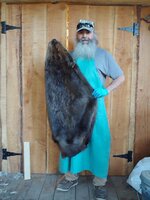








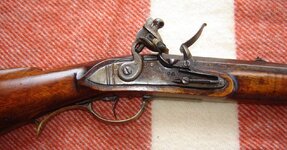



![P1110224[1].JPG P1110224[1].JPG](https://data.northwestfirearms.com/attachments/510/510377-b7da42d24e0adaafa5f7cee032fbefe9.jpg)
